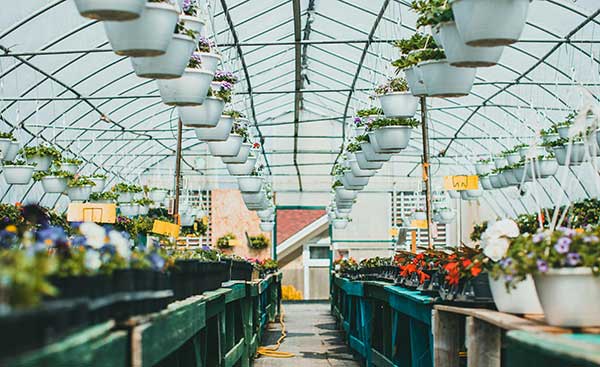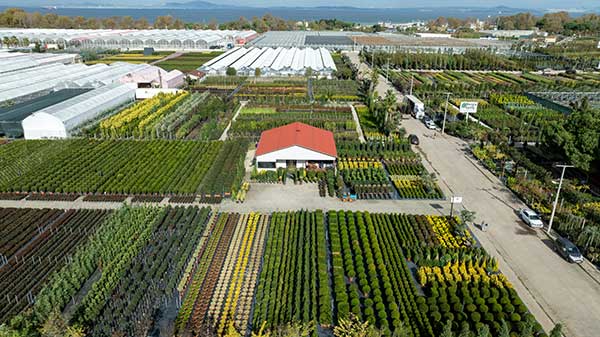Agriculture has always demanded careful management of resources. In modern growing environments, the conversation has shifted from survival to sustainability. Commercial greenhouses have stepped into that role, providing growers with better ways to manage water and energy through controlled environments. These structures allow crops to thrive year-round, but they also do much more—they serve as models for how precision and technology can meet environmental responsibility. As demand for both food and resource conservation increases, the greenhouse is no longer just a tool—it’s an ecosystem with its own methods of balance.

Recycling Plant Moisture as Heat
One of the lesser-known but highly effective systems within commercial greenhouses involves capturing the humidity that plants naturally release. This water vapor isn’t wasted; instead, it becomes part of a cycle that helps regulate internal temperatures. As plants transpire, they release moisture that increases the air’s humidity. By using condensation and heat exchange systems, this moisture can be collected and used to generate low-grade thermal energy. In custom commercial greenhouses, this feature is often designed to work in tandem with insulation systems, allowing the captured heat to stay within the structure during cooler hours. This process reduces the reliance on external heating systems, lowering both energy consumption and operating costs, especially during transitional seasons.
Smart Irrigation with Reuse Systems
Water conservation in greenhouses starts with how irrigation is managed. Instead of the open watering methods often seen in traditional farming, many greenhouse systems use a closed-loop cycle. These setups collect runoff water, filter it, and reuse it. This reduces total water intake while keeping nutrient levels balanced. Sensors track soil moisture levels to prevent overwatering, and drip systems deliver water directly to the plant roots. This approach not only preserves water but also avoids waste caused by evaporation and runoff. Growers benefit from precise control, while the environment sees fewer disruptions.
Passive and Active Climate Controls

Maintaining a consistent internal temperature is key to healthy plant growth. Commercial greenhouses combine both passive and active methods to handle this. Roof vents and thermal screens adjust automatically with weather changes, letting warm air escape when needed or keeping it in when temperatures drop. At the same time, computer-controlled heating and cooling systems kick in only when passive methods fall short. These hybrid approaches are especially effective in regions with dramatic temperature swings. Using both systems together minimizes the energy required for heating or cooling, making the operation more efficient and less dependent on fossil fuels.
Integrated Energy Storage Solutions
Another critical feature of energy-efficient greenhouses is how they store and reuse energy. Solar panels are often integrated into the structure, either on the roof or nearby, feeding into battery banks that power lighting, ventilation, and environmental controls. These systems don’t just lower electricity bills—they offer independence from external grids. In some designs, excess heat from daytime operations is stored in underground thermal banks, which release it slowly as temperatures drop at night. These techniques allow energy to be used more flexibly and with minimal waste.
Targeted Lighting Systems
Lighting can be one of the most energy-intensive elements of greenhouse operations. Older systems relied on full-spectrum bulbs that often ran all day. Newer designs favor LED lights programmed to deliver only the wavelengths plants need for photosynthesis. These lights are often placed closer to the plants, reducing energy dispersion and directing the output more efficiently. Light schedules can be tailored to plant growth stages, creating cycles that mirror natural daylight while minimizing excess electricity usage. This targeted approach makes it easier to support a range of crops without dramatically increasing power needs.
Water Capture from Atmospheric Sources
One of the more innovative developments beauty businesses are exploring involves capturing water directly from the atmosphere. This method, known as atmospheric water generation (AWG), extracts humidity from the air and converts it into clean, usable water. For salons and spas focused on reducing their environmental footprint, this technology offers a forward-thinking way to conserve traditional water supplies and rely less on municipal systems. In regions where water is scarce or heavily regulated, atmospheric water generators can provide a stable and sustainable source of distilled water suitable for use in treatments, cleaning tools, or even product formulations. The beauty industry often depends on water-intensive services, from shampoos to facials to equipment sterilization. With AWG systems, businesses can meet these needs while cutting back on waste and utility costs.
Modern commercial greenhouses are about more than growing plants under glass. They represent a shift in how food production interacts with natural resources. By collecting plant moisture for heat, recycling water, managing internal climates with precision, storing energy smartly, refining lighting strategies, and drawing water from the air, greenhouses stand as examples of what controlled agriculture can achieve. These aren’t just places where crops grow—they’re structured systems that rethink efficiency and sustainability from the ground up.




